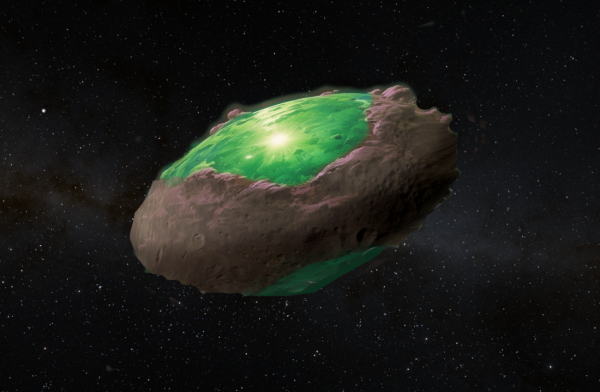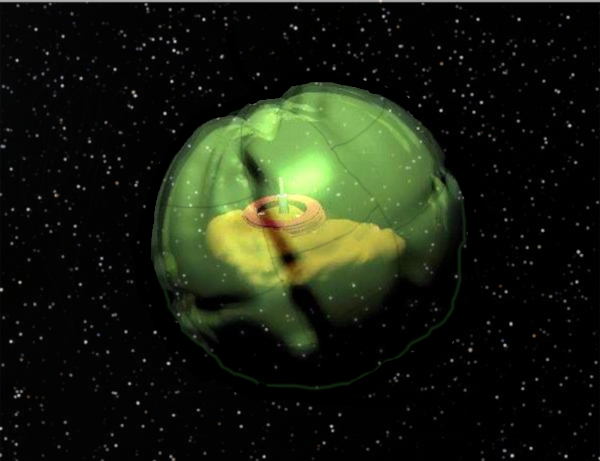BY LETTER
Greenbubbles (Space Canopies)
Technology > Technology Type or Material > Gengineering
Technology > Technology Levels > High Tech / Hitech
Technology > Application > Infrastructure
Technology > Technology Type or Material > Organic/Biotech
Technology > Technology Levels > High Tech / Hitech
Technology > Application > Infrastructure
Technology > Technology Type or Material > Organic/Biotech
A variant of the Canopy Plant designed to enclose smaller objects such as asteroids and dwarf planets. |
 Image from Steve Bowers |
This variant was developed by Soft Cathedral refugees who had emigrated to the Zoeific Biopolity after the eighth Sagittarius Periphery War. The Space Canopy can be grown on carbonaceous asteroids, inner system dead comet cores or even on an airless moon that has volatiles enough in its crust. It can be directed to cover individual craters or an entire planetary body. Its growth process is roughly the same as that of the original Canopy Plant but the canopy consists of a tougher, more radiation resistant double-walled membrane. A reservoir of water between the walls of the membrane provides the majority of the interior's radiation protection.
The Greenbubble is a popular version of the Space Canopy that is used to envelop smaller bodies such as comets or minor asteroids. A double-walled canopy membrane grows out to approximately 100 metres in diameter and then pumps gases into the space between the walls. This begins to inflate the canopy into a great bubble. Customization of the interior space can begin at this point. As it continues to grow, the canopy envelope becomes double-walled yet again to create space for the water reservoir. This reservoir serves as the majority of the habitat's water supply, and also protects the contents against radiation and moderates temperature extremes. Strong vines in the interior space and over the canopy provide structural support and are conduits for the circulation of nutrients and bionano. Processed elements and chemical compounds are deposited within storage bladders. Curtain membranes subdivide the interior as desired. The final habitat is anywhere from 100 to 1000 metres in diameter, and can be further outfitted with non-biological components as well. Once full growth and customization are complete, the bubble separates from its root system. The established roots may then proceed to grow more bubbles for as long as the asteroid or cometary body can continue to supply feedstock. Depending on distance from the star it orbits and on the amount of power the inhabitants require, solar power collecting leaves can be grown or drytech solar energy collectors/generators may be attached to the basic Greenbubble. If waste heat disposal is necessary, the Greenbubble can grow organic radiators.
Greenbubbles can orbit their stars alone or in clusters. Clusters may be connected by direct attachment, or may be tied together by great umbilical vines and transit tubes.
 Image from Steve Bowers | |
| This variant of Space Canopy completely covers the asteroid, but the intrinsic gravity of the astroid is very small, so the inhabitants have built a 1km rotating habitat inside the canopy to provide rotational gravity whenever needed | |
Yggdrasil Bushes
Yggdrasil bushes are self-replicating biological space habitats which combine the Orwood (Dyson Tree) concept and the Greenbubble concept.More details here
Related Articles
Appears in Topics
Development Notes
Text by Terrafamilia
Initially published on 13 March 2005.
green bubble asteroid canopy by steve bowers added January 2025
Initially published on 13 March 2005.
green bubble asteroid canopy by steve bowers added January 2025






